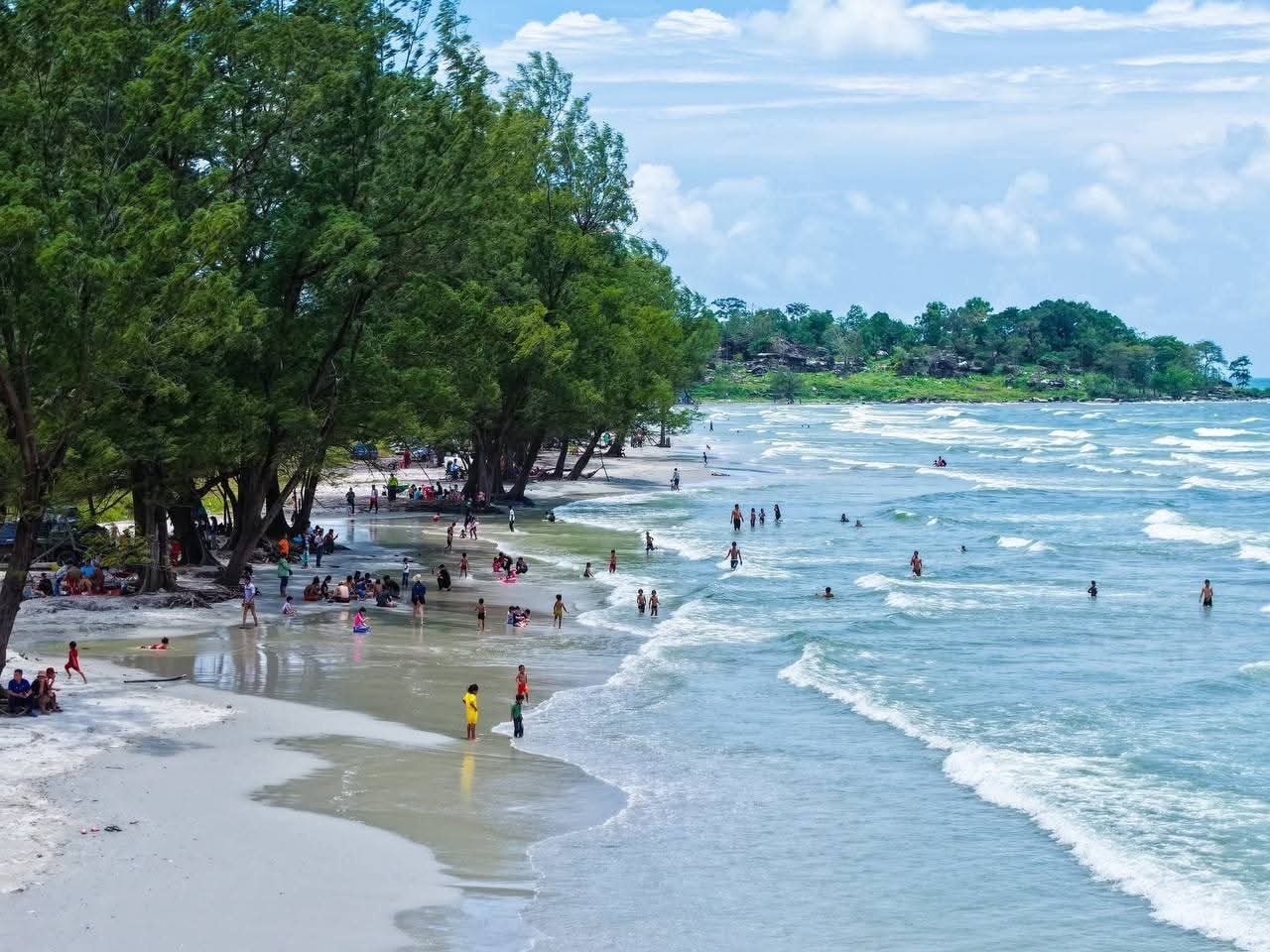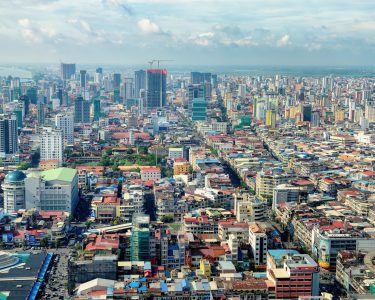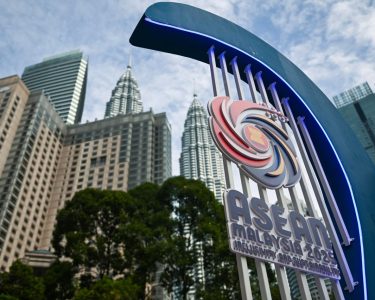So Lyhong
Cambodia’s coastline, once a lifeline for generations of fishing and farming families, now stands at a crossroads. Valued at an estimated $2.4 billion annually—about 16 percent of Cambodia’s GDP—the ocean economy has the potential to secure long-term prosperity. Yet unchecked development has eroded critical habitats, raising urgent questions about whether Cambodia can shift toward a blue economy that balances growth with sustainability.
The World Bank’s estimates highlight the ocean economy’s importance, but rapid development has degraded the very ecosystems that sustain it. Building a true blue economy hub will require policymakers to move away from short-term exploitation and adopt a resource-inclusive model that prioritizes ecosystem health, long-term resilience, and equitable value distribution.
Each coastal province holds natural resources essential for advancing a blue economy, but challenges remain. Koh Kong, for example, is home to Cambodia’s largest mangrove forests and a diverse range of coastal habitats, including 3,993 hectares of seagrass meadows and 602 hectares of coral reefs. These ecosystems provide food security and support tourism, yet they are under severe threat. Between 1989 and 2017, more than 40 percent of Koh Kong’s mangroves were cleared.
Reminders Of Rapid, Poorly Managed Growth
Sihanoukville, with its 2,648 square kilometers of land and 109 kilometers of coastline, is a central economic hub built on agriculture, tourism, urban development, and shipping. The province also hosts Cambodia’s only deep-sea port. But its once-thriving landscape is now marred by abandoned casinos and unfinished buildings—reminders of rapid, poorly managed growth.
Read More: Air Cambodia Launches Sihanoukville–Shenzhen Direct Flights As Travel Demand Grows
Kampot and Kep, though smaller, are equally significant. Both provinces harbor mangroves, seagrass meadows, and coral reefs. Kampot’s shoreline, however, has suffered losses of seagrass and coral due to the expansion of the port, while neighboring Kep has taken a more proactive approach by establishing a marine management area to protect its remaining mangroves. These fragile ecosystems not only support fisheries but also absorb carbon and shield coastal communities from storms. Yet pollution, illegal trawling, and weak governance continue to drive their decline.
The boom and bust in Sihanoukville highlights the dangers of expansion fueled by casinos. Hundreds of skyscrapers now remain empty after the city was transformed into a “Wild West” by Chinese money until a 2019 collapse, a gambling ban and the pandemic. Reviving them with tax breaks runs the risk of repeating an unsuccessful strategy.
Cambodia needs to pivot away from the same mistake in these coastal provinces toward a blue economy strategy as a new growth engine instead.
The blue economy is meant to sustain economic growth by using ocean resources. Fisheries, aquaculture, marine, renewable energy, ecotourism, and carbon credit are all included. With coastal communities making up nearly 7 percent of the whole population that rely on farming and fishing, these numbers show why the provinces are perfect for a blue economy based on carbon-rich environments and ecotourism.
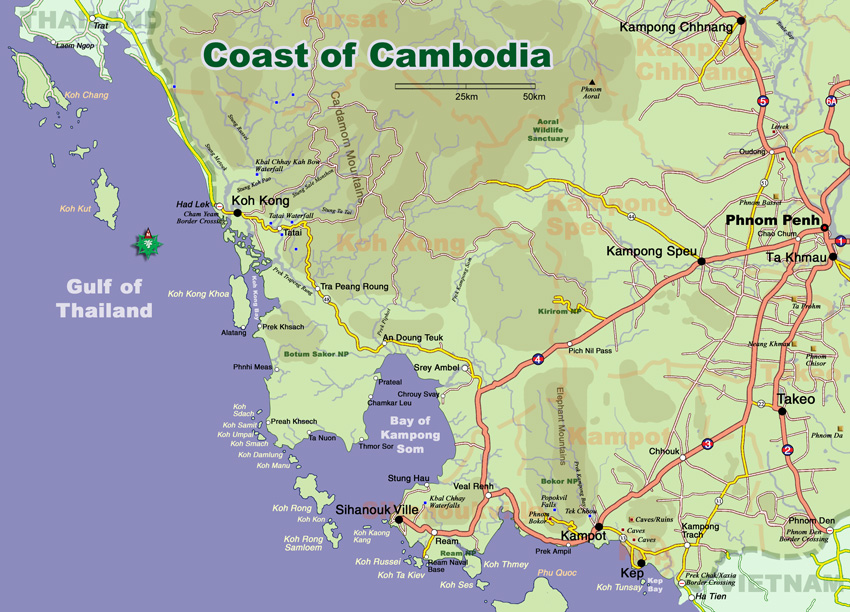
Despite supporting millions, overfishing and illegal trawling have ruined Cambodia’s marine fishery. Research by the Asian Development Bank (ADB) shows that 67 percent of coastal fishing households reported a significant drop in fishing revenue in recent years, with an average 50 percent decrease from 2019 to 2022.
The solution to this issue is to strategize a multi-step approach that includes improved better enforcement and establishing marine protected areas and securing the rights of small fishermen. Cambodia’s coastal provinces can restore its fish populations and generate jobs by investing in conventional approaches following the examples like the AFD-ADB Sustainable Coastal and Marine Fisheries and CAPFish-Aquaculture program which show how climate-resilient mariculture creates jobs and rebuild shocks.
Before the pandemic, almost 19 percent of Cambodia’s GDP came from tourism. Coastal provinces can draw tourists with diving, wildlife viewing and culture instead of casinos.
Improves Biodiversity and Generates Revenue Streams
Fish populations and coral reefs recover when protected areas like Koh Rong are maintained. Importantly, tidal marshes, seagrass beds, and mangroves are powerful carbon sinks. Compared to terrestrial forests, these blue carbon ecosystems store three to ten times as much carbon per hectare. Restoring them cultivates enormous climate benefits. Protecting and expanding these habitats not only improves biodiversity and seashore but also generates revenue streams.
Companies looking to offset emission can purchase credits from verified projects under voluntary carbon markets. The profits from the sale of credit can be used to support infrastructure, healthcare, education and especially the community-led initiatives in those areas. There is less chance of carbon buried underground being released.
Beyond carbon credits, ecotourism which include crab feasts, mangrove kayaking, and snorkeling, provides alternative revenue for communities and guarantees that conservation supports diversified livelihood.
These coastal provinces can also be a hub for clean energy by offshore wind and solar installations that could supply clean electricity to communities, ports, fish farms, resorts while creating skilled jobs. It just needs effective governance reform.
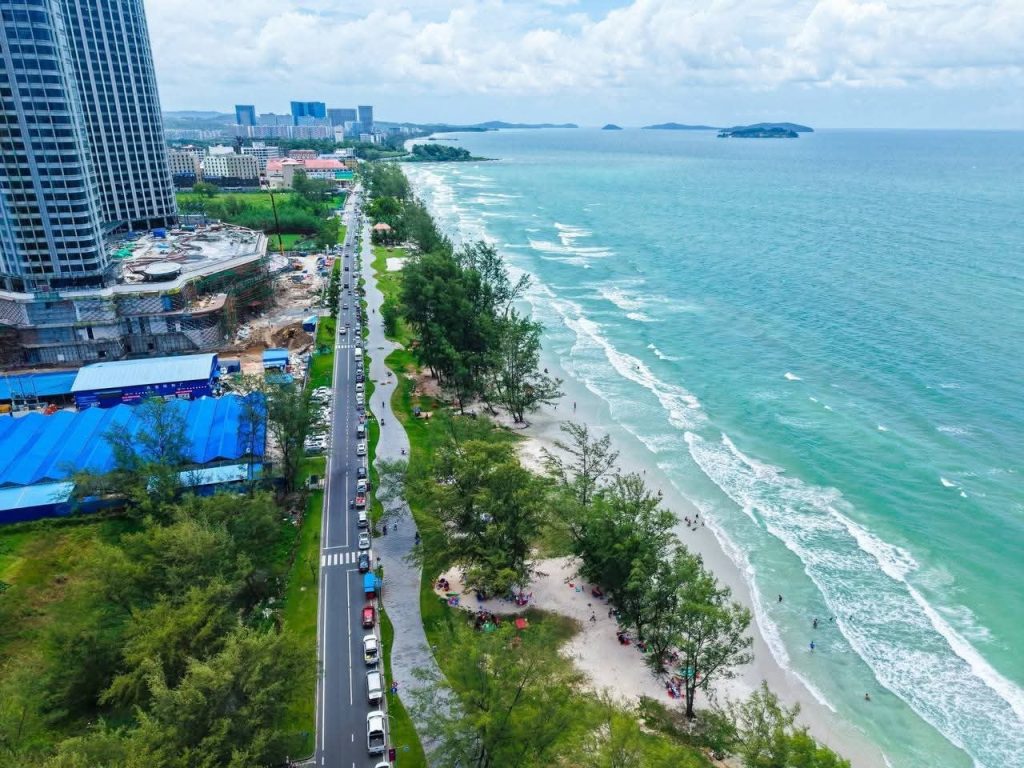
All coastal projects should be subject to environmental evaluations, and integrated planning should be overseen by a reformed National Committee for Coastal Management and Development. Community co-management and more transparent land-use and marine rights are necessary for a more equitable distribution of benefits. This can be financed by innovative blue financing like bonds, carbon credits or climate funds for clean energy and environmental rehabilitation.
More than one million coastal residents depending on these resources must be given priority in the blue economy. This includes promoting community-owned tourism and helping fishermen take on new responsibilities like reef monitoring or sustainable aquaculture. Sharing carbon credit benefits locally and diversifying employment will help reduce poverty and migration in the region.
Successful Alternative Path Through The Blue Economy
The future of Cambodia’s coast depends on two distinct paths ahead. One option is either repeat the failure of Sihanoukville speculation and environmental decay leading to “ghost cities” or the successful alternative path through the blue economy.
This alternative path offers lasting prosperity by protecting coastal ecosystems and investing in sustainable fisheries, carbon credits, ecotourism, and clean energy. Achieving it will require the Cambodian government to uphold transparency, strengthen governance, and rigorously enforce environmental laws. Equally vital are partnerships between communities, NGOs, and the private sector, which must work hand in hand with the government to drive this transformation.
So Lyhong is a Cambodian researcher, a Master of Science in Natural Resource Economics at Kyoto University in Japan and a recipient of the Honda Young Scientist Award. This article was first published in Cambodianess.


